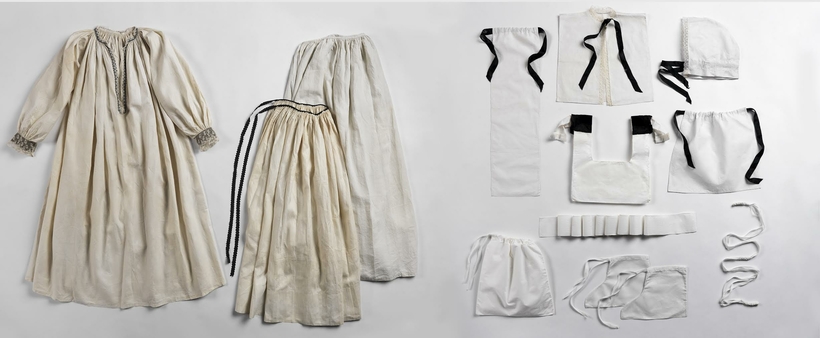For 2,000 years the Jewish people lived in galut, exile from their ancestral homeland, Eretz Yisrael. Though they scattered across the four corners of the earth, they were bound together by Jewish law, living and praying by the same rules. Having established diverse Diaspora communities throughout the world, however, unique customs inevitably arose, differentiating the traditions of Ashkenazi, Mizrahi, and Sephardic Jews. Such customs were not only relegated to daily life but to death and mourning as well: specifically, the ritual cleansing of the body and the burial shrouds the deceased are adorned in. At the Israel Museum, Jerusalem, “Dressed for Eternity: Jewish Shrouds Through the Ages” is the first major exhibition to examine the evolving traditions behind Jewish burial garments.
Featuring a range of textiles and clothing from Morocco, Yemen, Turkey, Europe, America, Israel, and beyond, the exhibition explores a rich yet understudied aspect of Jewish history: the material relationship between life and death. While burial shrouds historically resembled the cotton undergarments worn throughout life, the two eventually merged over time, as if to forge the connection. As the exhibition’s curator, Efrat Assaf-Shapira, told Air Mail, the burial shroud was often repurposed from “articles originally used for a wedding or in childbirth,” to strengthen this unity.

Viewers also learn how customs and narratives forged in geographical isolation are now part of Israeli intracultural dynamics. “As a consequence of immigration,” Assaf-Shapira explains, “some items became fused, while new local traditions were formed.”
The exhibition brings to light fresh findings on how mourning reflects themes of communal responsibility and the gendered division of labor. In Morocco, where gender segregation was more prominent, men and women would sew shrouds only for their own genders. But in Alsace and Germany, women were entirely responsible for all shroud preparations as a form of repentance for Eve’s original sin, which brought mortality to mankind.
Aesthetic symbolism, the sacred act of garment preparation, and the yearning for a return to Eretz Yisrael—these are all poetic facets of the burial shroud throughout history.
“Dressed for Eternity: Jewish Shrouds Through the Ages” is on at the Israel Museum, in Jerusalem, through October 14
Lucy Horowitz is a fact checker for AIR MAIL
